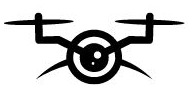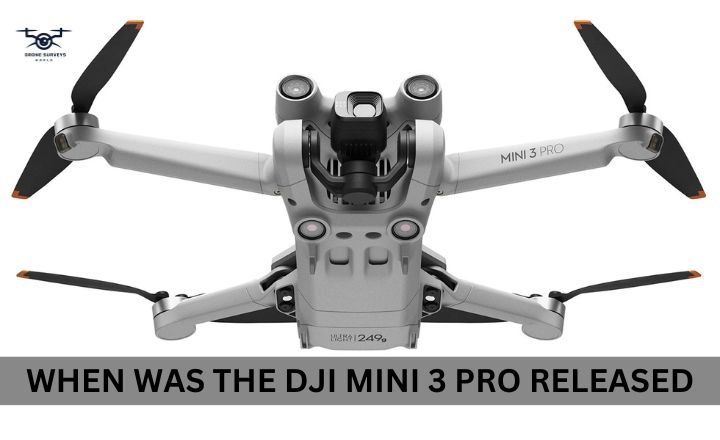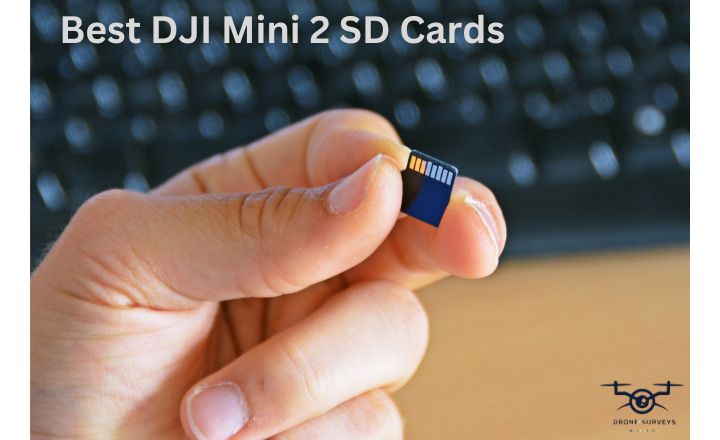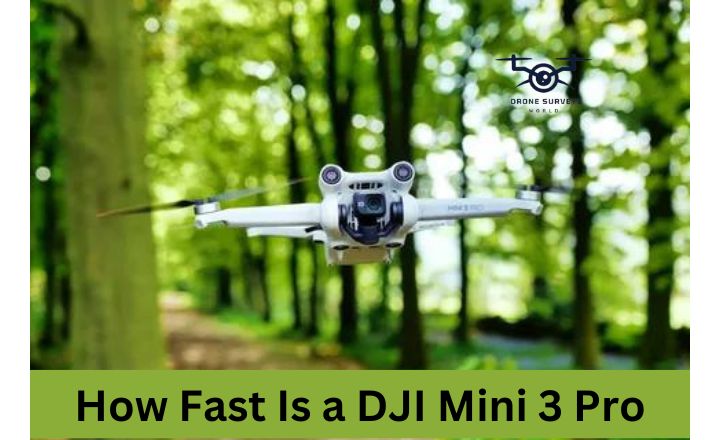In drones, weight can make all the difference between soaring effortlessly through the skies or feeling like a burden on your adventures. As drone enthusiasts eagerly await the release of DJI’s latest innovation, the Mini 3 Pro, one burning question echoes across forums and discussion boards: How Heavy Is The DJI Mini 3 Pro? Join us as we delve into aerial technology to uncover just how much heft this sleek new gadget brings to the table – or, rather, to the skies.
DJI Mini 3 Pro Weight
The DJI Mini Pro 3 is light and weighs less than 249 grams. It’s easy to carry and use. When you add the Intelligent Flight Battery Plus, it can weigh around 290 grams. Even with the battery, it is still lighter than many other drones.
DJI mini 3 weight helps it fly smoothly and exempts it from some drone rules. The DJI Mini 3 Pro is small, packed with features, and stays very light.
difference between mini 3 and mini 3 pro
The weight of a drone can significantly impact its performance and portability. When comparing the DJI Mini 2 and Mini 3 Pro, both weighing less than 249 grams, it seems like a marginal difference.
Upon closer inspection, the slight increase in weight in the Mini 3 Pro hints at potential enhancements and improvements in its design. This extra weight may indicate a sturdier build or additional features that could elevate the overall flying experience for users.
Consider these key points about the weight difference between the two models:
Mini 3 vs Mini 2 weight comparison
The slight increase in weight of the Mini 3 Pro compared to the Mini 2 may seem insignificant at first glance, but it can have noticeable implications for users. The added weight could affect portability and ease of handling, especially for those who prefer lightweight devices for on-the-go use.
The Mini 2’s adherence to weight regulations in most countries has been lauded for its convenience and compliance. The slightly heavier build of the Mini 3 Pro might offer a different tactile experience for users.
Mini 3 Pro-weight impact
The increased weight of the Mini 3 Pro compared to the Mini 2 could potentially bring about a significant shift in its flight dynamics. As drones rely heavily on their weight-to-power ratio for smooth and stable flights, any added weight might impact the overall performance.
The additional heft might result in a noticeable decrease in agility and responsiveness during maneuvers, affecting the drone’s ability to change directions or navigate through tight spaces quickly.
Weight regulations for Mini 3 Pro
The Mini 3 Pro’s adherence to weight limits set by regulations in most countries has been a significant advantage for users. This means owners do not have to go through the hassle of registering their devices or undergoing formal training.
By staying within these weight boundaries, the Mini 3 Pro provides a convenient and accessible option for individuals looking to explore the world of drones without unnecessary bureaucratic hurdles.
Portability of Mini 3 Pro based on weight
The slight increase in weight of the Mini 3 Pro compared to its predecessor, the Mini 2, may slightly affect its portability. This drone still falls under the category of compact and lightweight devices.
The added weight can be attributed to improvements in technology and features that enhance the overall performance of this model. This increase in weight might even signal a more robust build quality, ensuring durability during outdoor adventures or aerial photography sessions.
Influence of weight on Mini 3 Pro design
The weight of a drone plays a pivotal role in its design and functionality. In the case of the Mini 3 Pro, the engineers may have strategically accounted for its weight during the construction process.
They optimized the drone’s overall structure and performance by considering the additional weight of features like cameras, sensors, and batteries.

Impact On Mini 3 Pro Flight Performance
The weight of the DJI Mini 3 Pro is important for how well it flies. This model is light enough to carry easily but heavy enough to handle wind. The weight distribution helps the drone stay stable and easily controlled, so you can take smooth aerial shots without shaking.
The weight also affects how long the battery lasts and how well the drone flies. A heavier drone needs more power to fly and might not stay in the air as long as a lighter one. Users should consider the weight when planning flights and using the battery efficiently. Balance weight and performance to get the most out of this small but powerful drone.
The weight of the DJI Mini 3 Pro affects how well it flies.
The weight can affect the speed of the drone
Considering the weight of a drone and its speed is crucial when evaluating overall flight performance. The Mini 3 Pro, with its maximum speed of 57 KM/h, may seem slower compared to some competitors due to factors like weight. So, recognize that heavier drones typically require more power to achieve high speeds, affecting their agility and acceleration.
The weight of the drone can impact its battery life
The aircraft’s weight plays a critical role in determining its battery life. The Mini 3 Pro, known for its impressive 34-minute maximum flight time with the standard Intelligent Flight Battery, is sensitive to additional weight.
Adding accessories or modifications can increase the overall weight of the drone, thus reducing its ability to stay aloft for extended periods.
strong wind
The Mini 3 Pro drone’s lightweight design is a double-edged sword in its performance in various weather conditions. Its portability and agility are commendable, but concerns arise when facing strong wind gusts.
The aerodynamic properties of a heavier drone typically provide better stability against turbulent winds, potentially leading to erratic flights or loss of control for the Mini 3 Pro.
How Heavy Is The DJI Mini 3 Pro
DJI Mini Pro 3 weight is a crucial factor for drone enthusiasts looking to invest in their next aerial photography tool. At just under 250 grams, this compact drone strikes a balance between portability and performance that sets it apart from its predecessors.
This lightweight design allows users to easily transport the drone without compromising the quality of their footage, making it an ideal choice for travel and outdoor adventures.
Regulations On Mini 3 Pro Weight
Countries like the United States and Canada have strict regulations regarding drone weight, with limits usually set around 250g for unrestricted flying.
In Europe, regulations vary by country, with some enforcing even lower weight restrictions for drones to be flown without a license or registration. Understanding these weight limitations is crucial for drone enthusiasts to avoid fines and ensure compliance with local laws.
Here are the important weight rules for the Mini 3 Pro:

Mini 3 Pro-weight limit
The weight limit of the Mini 3 Pro, being under 249 grams, unlocks a host of opportunities for drone enthusiasts in various countries. This exemption from registration requirements streamlines the process for users and promotes accessibility to drone technology on a broader scale.
The convenience of flying a lightweight drone like the Mini 3 Pro without bureaucratic hurdles is undoubtedly a game-changer in the realm of aerial photography and videography.
Weight limitations for Mini 3 Pro
Introducing the Intelligent Flight Battery Plus opens up a realm of possibilities for Mini 3 Pro users, but with great power comes great responsibility.
It’s crucial to be mindful of weight restrictions, as additional accessories like filters and propeller guards can push the takeoff weight beyond permitted limits. The implications go beyond regulatory compliance, delving into safety concerns and potential performance issues that may arise.
Mini 3 Pro-weight considerations
In many countries, registering drones and obtaining relevant licenses or certificates are non-negotiable. These measures ensure safety, accountability, and adherence to aviation regulations.
For instance, in the United States, drone operators must register their aircraft with the Federal Aviation Administration (FAA) and acquire a Part 107 Remote Pilot Certificate to fly commercially.
Mini 3 Pro Weight And Portability
Weighing in at less than 249 grams, the Mini 3 Pro drone is a perfect companion for travelers seeking to capture stunning aerial footage on the go. Its lightweight design makes it easy to pack into any travel bag or backpack without adding unnecessary bulk.
This mini drone is a game-changer for adventure seekers who want to document their journeys without carrying heavy equipment.
The compact size of the Mini 3 Pro allows it to fit in even the smallest spaces, making it ideal for impromptu photo opportunities while traveling. Whether exploring a bustling cityscape or hiking through rugged terrain, this portable drone ensures you never miss a moment worth capturing.
The convenience of whipping out your drone at a moment’s notice can truly enhance your travel experience and help you create unforgettable memories from unique perspectives.
How Does Weight Affect Mini 3 Pro Design?
The weight of the DJI Mini 3 Pro is a critical factor that impacts its design and overall performance. By meticulously balancing weight with structural integrity, DJI engineers have managed to create a drone that is lightweight yet durable, offering enhanced flight stability and maneuverability.
The strategic weight distribution in the Mini 3 Pro contributes to its agility during flight, allowing for smoother aerial maneuvers and more precise controls.
Mini 3 Pro weight distribution
The Mini 3 Pro weight distribution is vital in determining the drone’s performance during flight. By carefully balancing the weight, engineers ensure that the center of gravity is optimized for stability and maneuverability.
This meticulous approach allows the drone to navigate smoothly through various flight conditions, whether hovering in place or performing intricate maneuvers.
Weight reduction techniques for Mini 3 Pro
DJI’s dedication to achieving a lightweight design for the Mini 3 Pro drone sets a new standard in aerial photography. By leveraging cutting-edge weight reduction techniques, such as incorporating advanced lightweight materials and streamlining internal components, DJI has created a compact yet powerful flying companion.
This level of innovation enhances user experience and showcases DJI’s commitment to pushing boundaries in the drone industry.
Effects of weight on Mini 3 Pro maneuverability
The lightweight nature of the Mini 3 Pro drone plays a crucial role in enhancing its maneuverability, making it remarkably agile and responsive to user commands.
With less weight, the drone can swiftly change directions, perform intricate aerial tricks, and easily navigate tight spaces. This heightened agility opens up a world of creative possibilities for drone enthusiasts, allowing them to capture stunning footage from new perspectives.
Weight considerations for Mini 3 Pro camera stability
The weight of dji mini 3 pro plays a crucial role in ensuring the stability of its camera during flight. By keeping the drone lightweight, DJI can minimize any potential shake or wobble that may affect the camera’s ability to capture smooth, clear footage.

Impact of weight on Mini 3 Pro battery life
One fascinating aspect of drone technology lies in the intricate relationship between a drone’s weight and its battery life. The Mini 3 Pro, known for its lightweight design, showcases how a lighter body can significantly impact flight time.
By requiring less power to stay airborne, the Mini 3 Pro can prolong its flights compared to its heavier counterparts. This highlights weight’s crucial role in determining a drone’s efficiency and performance.
Conclusion
The DJI Mini 3 Pro’s weight is crucial for those seeking a lightweight, portable drone. How Heavy Is The DJI Mini 3 Pro? At just under 250 grams, it falls within the regulatory limits set by many countries, making it an attractive choice for aerial photography enthusiasts and travelers alike.
By understanding and appreciating the weight of this drone, consumers can make informed decisions about their purchase based on their specific needs and preferences.
Frequently Asked Questions
How much does the DJI Mini 3 Pro weigh with a bigger battery?
The weight of the DJI Mini 3 Pro with a bigger battery will depend on the specific battery you are using. The standard weight of the DJI Mini 3 Pro is around 249 grams, but adding a larger capacity battery may increase this weight slightly.
How high can a DJI Mini 3 Pro fly?
The DJI Mini 3 Pro, like other drones in the DJI Mini series, has a maximum flight altitude of 4,000 meters above sea level.
Does DJI Mini 3 Pro need to be registered?
Yes, the DJI Mini 3 Pro does need to be registered with the Federal Aviation Administration (FAA) if you plan to fly it in the United States.





